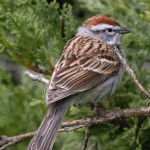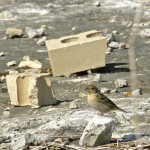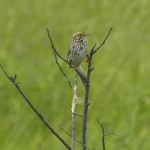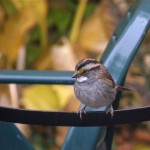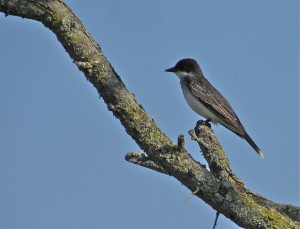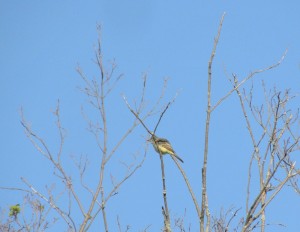June 1 2013. Flamborough, ON. I’m still scouting ahead for the dawn chorus trip a week from now, and I’m starting to wonder what has happened to dawn-choruses? These scouting trips make good quick-fire birding, but there’s hardly a symphony of bird song. Maybe the best is past – or maybe it’s yet to come. I do hear birds when I listen for them, but not the dawn choruses that I remember. I’ve certainly heard sensational dawn choruses here in Southern Ontario. Just not this year, not yet, and not where I’m listening it seems.
In my childhood, my dad & I took early morning bike rides looking for mushrooms and listening for bird song. I have memories of bird-song all around: blackbirds, thrushes, and finches. The bike riding wasn’t for exercise, it was the only mode of transportation we had and I recall that many of those excursions were knuckle-stiffening cold, but they were truly memorable for bird-song as well as for the fresh field mushrooms fried up later for breakfast.
One of my stops today was at the edge of a large hay field, in fact there were open fields on both sides of the road. The grass is far from full grown so hasn’t been cut yet, which is as well because it holds a fairly large population of nesting Bobolinks and sparrows. I was delighted to hear four sparrow species around me: a distant Field Sparrow calling just as all the texts describe it like a ping-pong ball bouncing ever faster to a stop “ Pee…pee…pe… pe..pe..pe..pe.p.p”. And a Savannah Sparrow, also distinctive with its dry “tsit-tsit-tsit-tsit- seee-ss“, the “Chp chp chp chp chp chp” of a Chipping Sparrow and the electric “B-zzzzzz” of a Grasshopper Sparrow. Actually I didn’t see any of them, these were all auditory ‘sightings’, which is often the way it goes with sparrows. And since they’re such uniformly little brown flitting birds it’s just as well that their songs are distinctive.
Taken together with an earlier White-throated Sparrow singing deep inside in a dense forest, sparrows were collectively my birds of the day. I hope they perform for me next weekend. Here’s a few of those birds, photos taken at different times and places of course.
